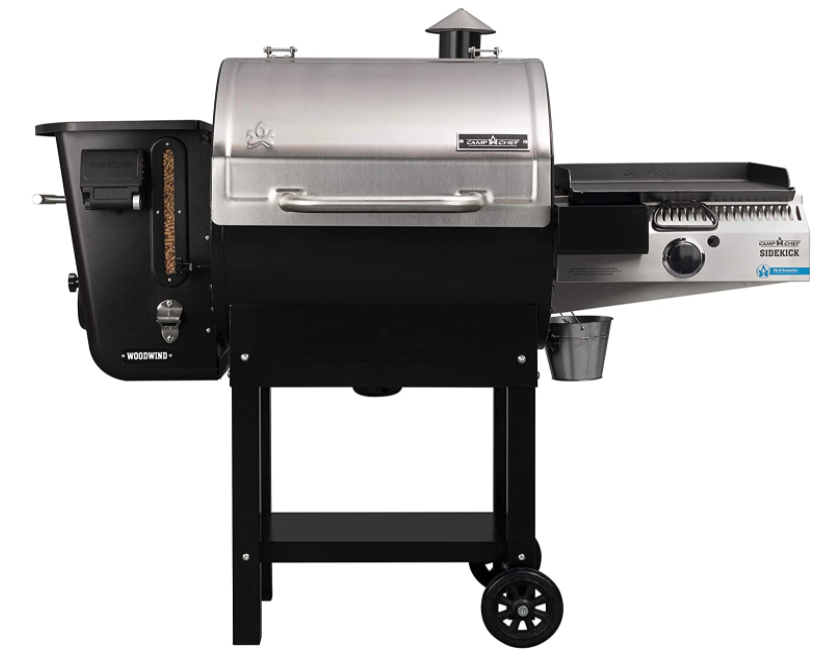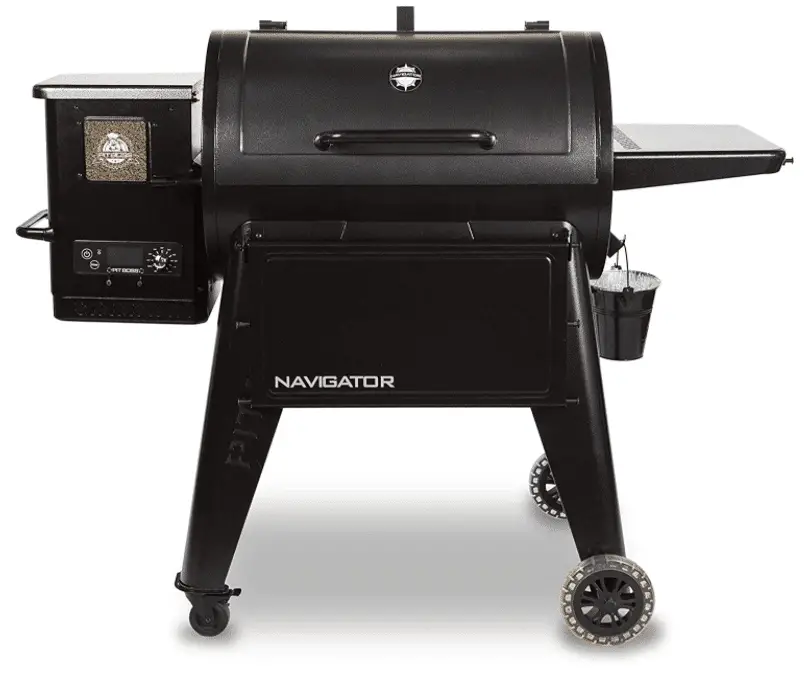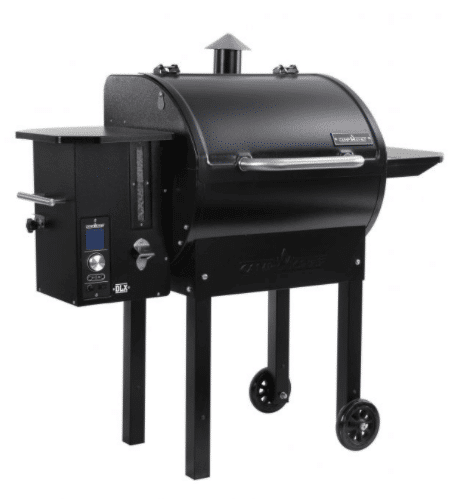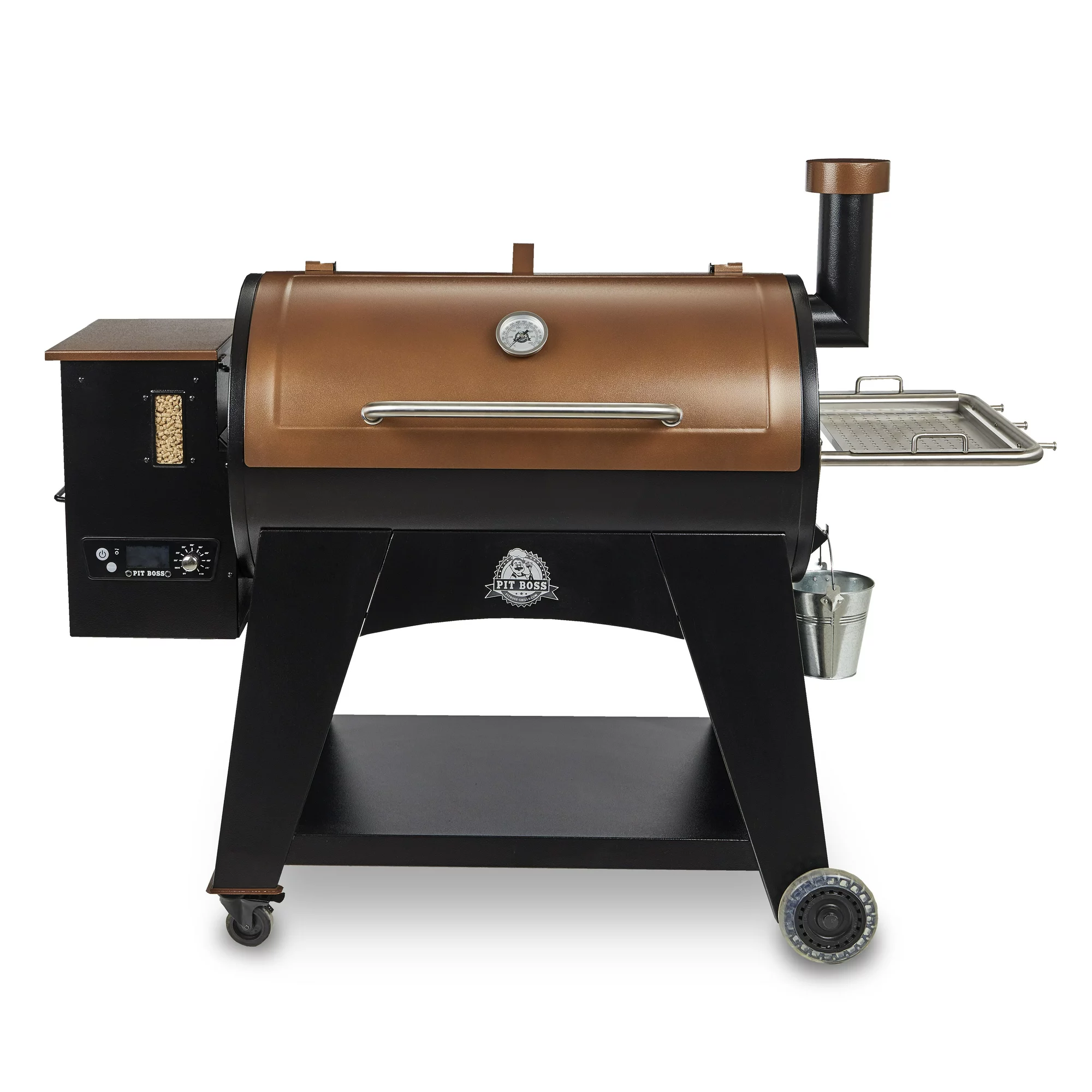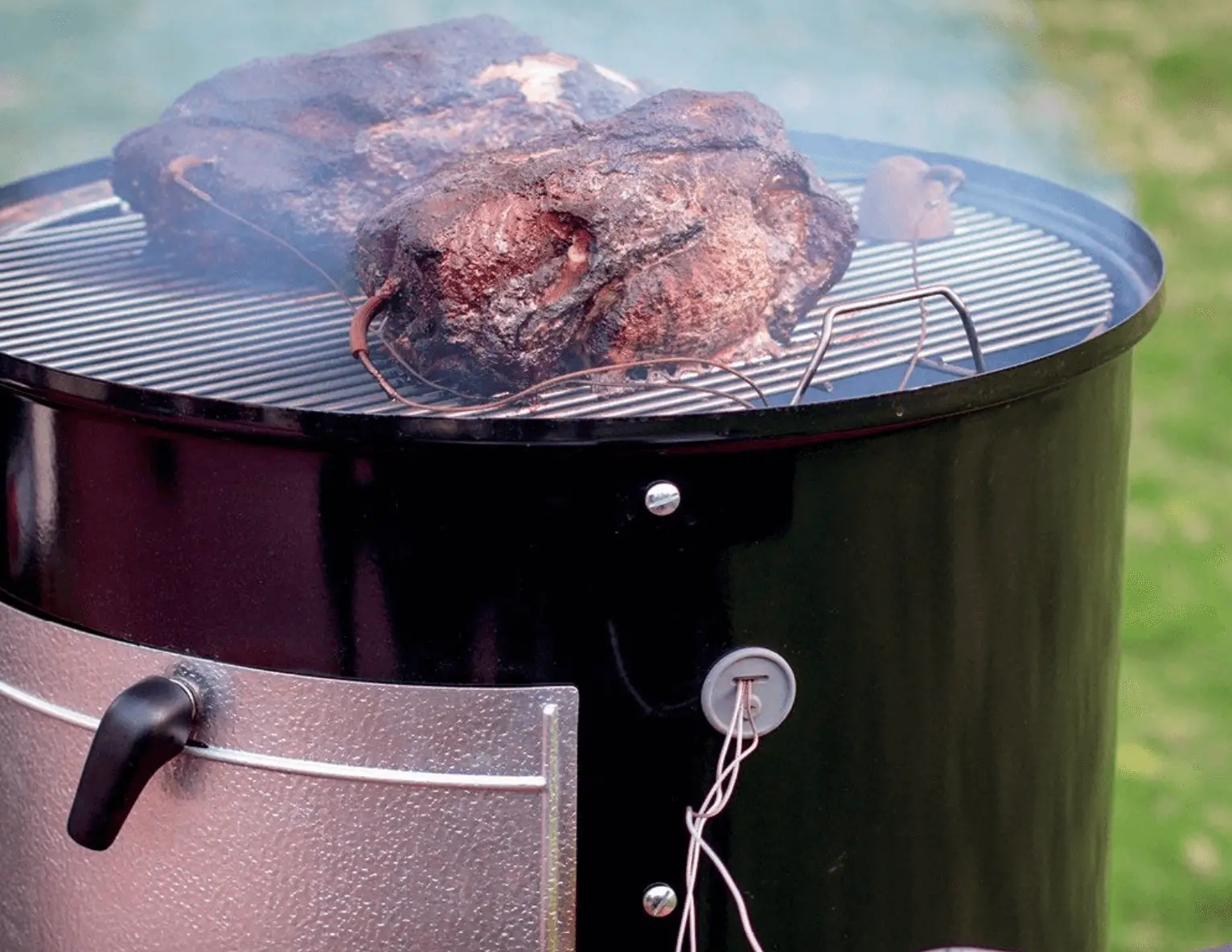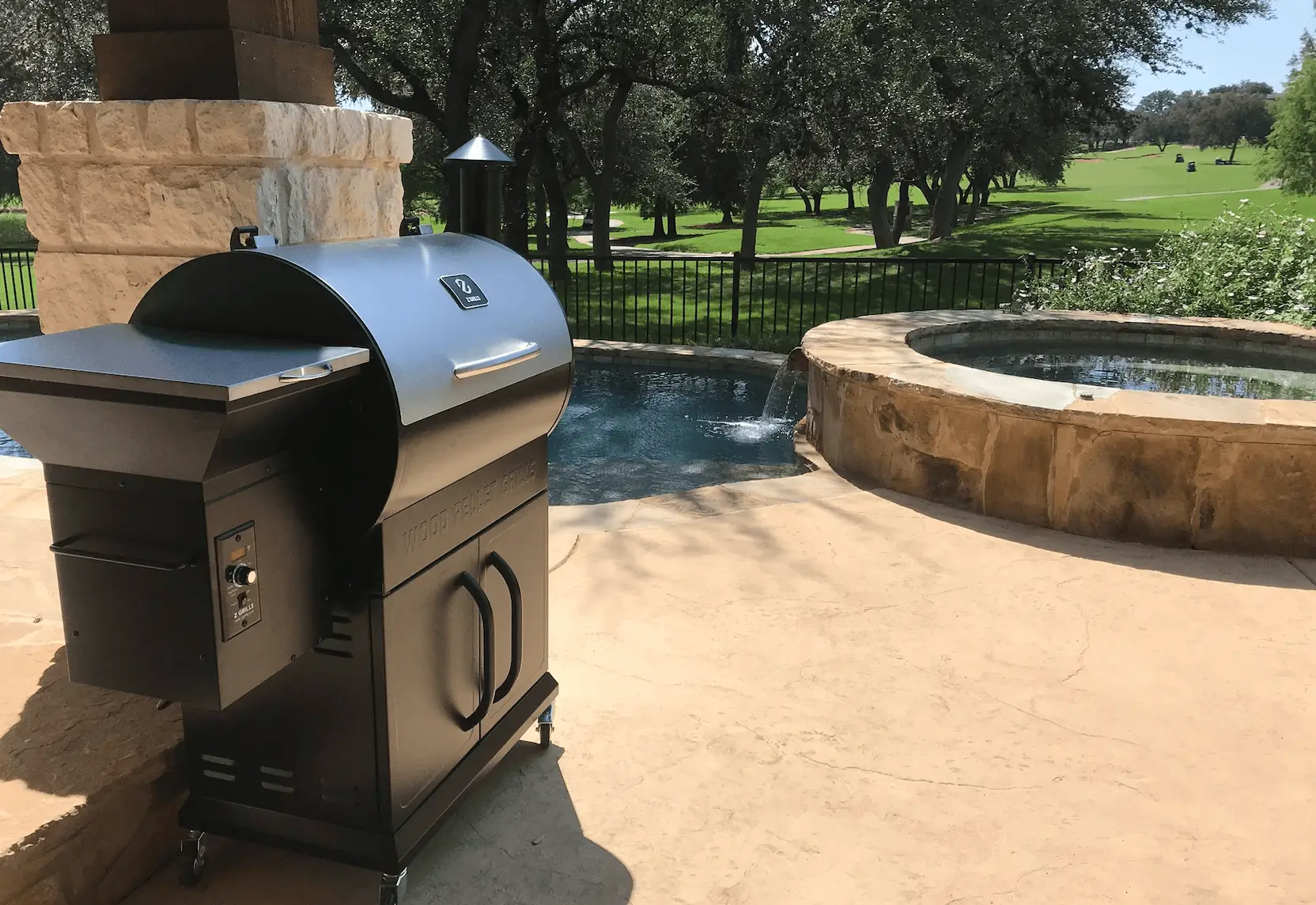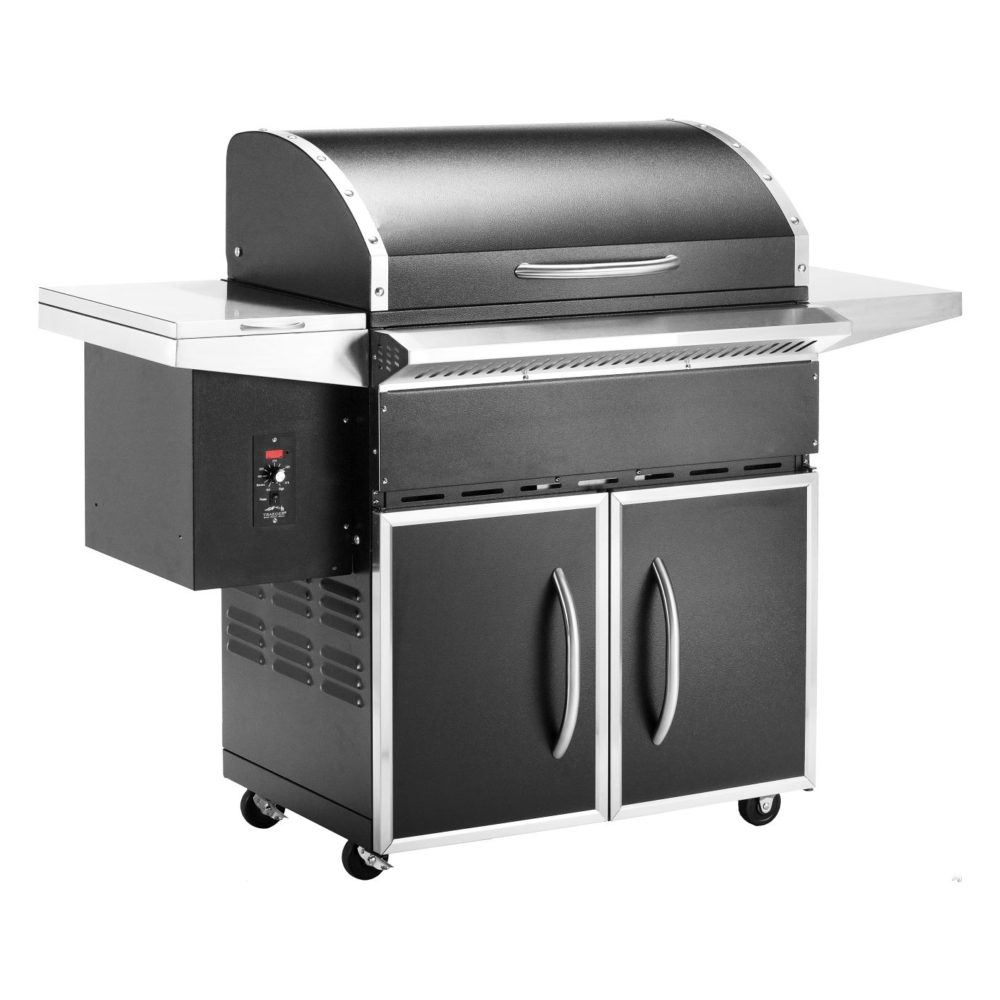One of my favorite types of articles to write for this site has been brand comparisons.
I don’t know what it is, but there’s something really fun about splitting hairs and really diving into the similarities and differences of different grill brands and their products.
This article is a comparison I’ve been wanting to write for a while. Camp Chef and Pit Boss are two of the most respected and popular brands in the smoker grills scene, and each of them frankly makes fantastic grills.
But you might be wondering which one is the best for you and your back patio. That’s where we can come in to help! In this article, we’ve created a complete comparison guide of Camp Chef vs Pit Boss pellet grills. By the end, you should know exactly which one is the right choice for you.
Why Trust Us?
I currently own a Camp Chef Woodwind WiFi – I’ve had it for over 2 years and it’s one of my favorite grills I’ve ever owned. So I may be a little naturally biased there, but I feel like I can speak directly to Camp Chef pellet grills strengths and weaknesses.
On the Pit Boss side, Own the Grill staff have used Pit Boss products before and I know quite a few folks who have their newer models of pellet grills – so we’ve been exposed to Pit Boss plenty and we have a good feel of how they compare to one another.
Camp Chef Brand Overview
Camp Chef was founded in the early 1990’s, when founder Ty Measom (an avid outdoorsman) was extremely dissatisfied with the general quality and availability of outdoor cookers suited for camping and other similar activities.
So he made it his mission to develop a cooking system that was compact, lightweight and powerful. One that could be easily taken along for an adventure that could also cook some delicious food.
That vision became a reality, and before long their first cooking system was an incredibly popular hit.
They’re built on that initial success by developing new products and continue to improve the products they already offer, including flat top grills, griddles, camping stoves, and much more.
Eventually, in the late 2000’s, Camp Chef entered into the world of pellet grills. They brought two decades of innovation and quality craftsmanship to the table, and nowadays their pellet grills are considered some of the absolute best of the best.
Pit Boss Brand Overview
Pit Boss was founded in the late 1990’s and has always struck a really nice balance with their products of affordability and quality.
Similar to Camp Chef, Pit Boss began making pellet grills in the late 2000’s (this is when Traeger’s patent on pellet grill technology expired), so they are now a little over a decade into crafting these cookers.
Pellet grills are arguably the most popular type of grill that Pit Boss sells, but they also have a pretty extensive offering of flat top grills, kamado grills, and vertical smokers too. No matter which Pit Boss products you’re looking at, odds are that they’re well made and capable of grilling some incredibly tasty meals.
Camp Chef vs Pit Boss Comparison
When it comes to brand comparisons, we like to start just by comparing some high level attributes that you can generally expect to find across all of the different grills these two brands have to offer.
After that, we’ll get into some more detailed reviews of Camp Chef vs Pit Boss pellet grills so that you can hone in on which one might be the best for you.
Temperature Control
One of the first and most important aspects of comparing pellet grills is temperature control. Since these grills rely on electronics to self regulate temperature, poor design can lead to difficulty achieving consistent results on your grill because of volatile temperatures.
There are really two areas we look at for temperature control. First, how precisely does the grill allow for you to set your temperature?
New models of Camp Chef grills can be set to 5°F increments across the entire temperature range, which is an incredibly nice feature. You can really dial in your temperature and smoke or grill your meat on the exact heat level you want to.
Pit Boss grills on the other hand have temperature setting increments of 15-25°F for most of their grills. This isn’t bad by any stretch of the imagination though, and you can still get right in to your desired temperature to cook with.
The other component of temperature control is how well the grill itself is insulated and retains heat. Here, both Camp Chef and Pit Boss grills generally do a really nice job of this and it’s hard to say one does a better job of retaining heat than the other.
Verdict (Temperature Control): Camp Chef
It’s hard to argue with this one. The ability to set your temperature in 5°F increments is a fantastic feature of Camp Chef grills and really lets you get precise with your cooks.
Temperature Range
One of the big reasons that pellet grills have become so popular over the last few decades is because of how versatile they are. On a pellet grill you can grill, smoke, sear, bake, and roast all on the same thing.
The reason all of that is possible is in part because pellet grills can be set to wide temperature ranges. Everything from low temperatures for low and slow smoking to scorching hot temperatures for searing should be achievable on a proper pellet grill.
Camp Chef grills generally have a temperature range of 160°F to 500°F. On the other hand, Pit Boss grills generally feature temperature ranges of 180°F to 500°F.
Verdict (Temperature Range): Camp Chef (barely)
It’s really hard to even call this one a win for Camp Chef because in practice, I’m not sure of a time I’ve needed to go as low as 160°F – or at least I think anything you would cook at 160°F could also be cooked just fine on 180°F.
The only times this could come in handy that I can think of would maybe be for some specific smoked beef jerky recipes or if you wanted to use your smoker to keep food warm before it’s served.
Either way, Camp Chef gets the slight nod on temperature range.
Cooking Surface Area Value
Both of these brands have a plethora of different-sized grills – and you can easily find one to fit your patio space.
The question then really becomes, how far does your dollar go in terms of cooking surface area? In other words, if you compare similarly sized grills from both brands, which one is more affordable?
Verdict (Cooking Surface Area Value): Pit Boss
If grilling and smoking rack space is all you care about, you’ll generally get more grills for less money by going with Pit Boss.
Extra Features
Camp Chef has made a point to be ahead of the game when it comes to providing extra features for their products. Most competitors don’t offer anything close to a pizza oven, griddle, or sear box attachment for their pellet grills.
On top of that, Camp Chef’s grills pretty much all have WiFi and Bluetooth capabilities. Your grill connects to a phone app, where you can manage all aspects of your cook – from setting your temperature, to setting your smoke levels, to monitoring your food’s internal temperature, to shutting your grill down.
Pit Boss grills, as we discussed above, are very well made – but as far as the extras go they don’t offer a ton. Their grills are really geared towards providing a great experience of the core utility of grilling and smoking food. Comparatively speaking, Camp Chef takes the cake in the battle of extra features.
Verdict (Extra Features): Camp Chef
Hopper Capacity
I always like to make a point to compare hopper capacities of grills. It’s one of those things that you might not think of at first, but it can make a huge difference in satisfaction with your grill over time.
The reason is because you can expect to burn anywhere from 1/2 to 1 1/2 pounds of pellets per hour of cooking on your grill, depending on how hot your temperature runs.
A small hopper means more frequent refills and the potential of cutting your cook off in the middle of it because you forgot to make a refill.
Camp Chef’s standard hopper size is 22 pounds, which is a nice size and definitely beats out a lot of the competition on the market.
Pit Boss grills have varying hopper sizes depending on the model, but by and large all of their full size grills have hopper capacities over 20 pounds also.
Verdict (Hopper Capacity): Tie
Warranty
Last but not least – it’s important to be mindful of the warranty. Any time I make a big purchase, I like to know that the product is protected just in case something goes wrong.
Camp Chef grills are for the most part covered by a 3-year warranty. Pit Boss grills generally are a little longer, as a 5-year warranty is standard on their products.
Verdict (Warranty): Pit Boss
Not much to debate here. A 3-year warranty is generous and above industry standard, but Pit Boss definitely offers the superior warranty with the 2 extra years of coverage.
Overall Camp Chef vs Pit Boss Winner
I always hate to choose a “winner” between two high-quality brands – because I don’t want to implicate that the non-winner isn’t also great.
Here that couldn’t be more of the case. I think the clear winner for my taste is Camp Chef – their grills are simply superior in a few objective measurements and they also knock it out of the park with extra features.
But that’s not to say Pit Boss isn’t great. If you’re looking for a fantastic grill on a more budget-friendly scale, you really can’t go wrong with a Pit Boss – they’re fantastic pellet grills.
Camp Chef vs Pit Boss – Grill Reviews
Camp Chef Woodwind Wifi 24 w/Sidekick
- Sidekick supports pizza oven, griddle, & sear box attachments
- 811 sq. in. of cooking surface area to work with across two levels
- Intuitive LED control panel and WiFi capabilities
I don’t think there’s a more complete cooker on the market today than the Camp Chef Woodwind Wifi. If you’re into pellet grills, it’s an option that provides you with a great one plus some more.
Most pellet grills are exclusively indirect heat cookers and warm your food with a convection style of cooking. You can definitely do that with this grill, but they’ve also included a sliding diffuser plate that will expose your fire pot. What this means is that you can cook over direct heat and achieve beautiful sears on your burgers and steaks.
Not only that, but you’re really able to dial in your preferences on this grill. The controller lets you set your temperature in 5°F increments anywhere from 160°F to 500°F. You can also set your smoke level from 1 to 10 to really customize how much smokey flavor makes it into your food.
We’ve already mentioned the sidekick attachment, but it’s worth pointing out again. A propane powered cast aluminum burner is built to house a sear box, griddle attachment, and artisan pizza oven attachment as well.
On top of all of that, this grill connects to a phone app where you can manage all aspects of your cook from the convenience of your phone. The Woodwind also comes with 4 built in probe thermometers that allow you to simultaneously monitor the internal temperature of your food while it cooks. The temperature readings can also be seen on the phone app.
- 1,158 sq. in. of cooking surface area
- 32 pound pellet hopper capacity
- Temperature range of 180-500ºF
My favorite pellet grill from Pit Boss probably has to be the Navigator 850 – it’s just an all around solid cooker. The Navigator Series also features the latest and greatest from Pit Boss’s technology improvements.
This grill also has a sliding diffusor plate that lets you grill over direct flame. Additionally, it has a temperature range of 180-500°F and features a generous 879 square inches of cooking surface area across a couple of racks in the main chamber.
One of the most impressive features of this grill is the 27 pound hopper – it’s frankly one of the biggest I’ve come across and a really nice feature that allows you to worry less about frequently filling up your hopper with pellets.
Last but not least, a digital LED display reads out your grill’s temperature and the reading of one built in probe meat thermometer.
Camp Chef SmokePro DLX 24
- Hopper holds 22 lbs of wood pellets
- 570 sq. in. of primary cooking surface area
Camp Chef also offers a more bare bones option if you prefer their brand but don’t necessarily care about all of the extra features that come on the Woodwind.
The SmokePro DLX 24 is still a very high quality grill though. The base unit is much more affordable and comes with a side shelf in lieu of the Sidekick (although it’s Sidekick compatible if you wanted to get one).
There’s a total of 570 square inches of cooking surface area across a main rack and a smaller upper rack area. This one comes with 2 built in meat probes that allow you to monitor your meat’s temperature as it cooks.
Similar to the Woodwind, the SmokePro has a temperature range of 160°F to 500°F and can be set in 5°F increments. You can also set your smoke levels on a scale of 1 to 10 on this grill.
If you want a more detailed look at how the SmokePro stacks up to the Woodwind, check out this article next.
Pit Boss Austin XL Pellet Grill
- Four rolling casters
- Temperature range 150 - 500 F
- Over 1000 sq in porcelain coated cooking surface
- Innovative flame broiler for direct flame grilling
- Digitally control board with LED read out with meat probe
The Austin XL pellet grill is one of the more popular grills from Pit Boss, and it’s easy to see why. As the name suggests, it features a huge amount of cooking surface area – a little over 1,000 square inches to be a little more precise.
So if you’re the type to throw on a bunch of BBQ or burgers at once for a larger crowd, this one is very much worth looking at.
The hopper can hold 31 pounds of pellets, so even though there’s a lot of grill to heat up you won’t find yourself constantly refilling pellets.
As far as other features go, it’s pretty similar to the Navigator. It has a built in probe thermometer and features a sliding diffusor plate to give you the option of direct heat grilling.
[optin-monster slug=”tnxx7wq84kenca3q0jgu”]
Final Thoughts
I hope you’ve found this round up of Camp Chef vs Pit Boss pellet grills to be insightful and helpful.
At the end of the day, you really can’t go wrong with either of these brands – both are great and more than capable of cooking incredible food.
Do you have one of the grills we talked about? How do you like it? We’d love to hear from you in the comments section below.
Discover more from Own The Grill
Subscribe to get the latest posts sent to your email.


